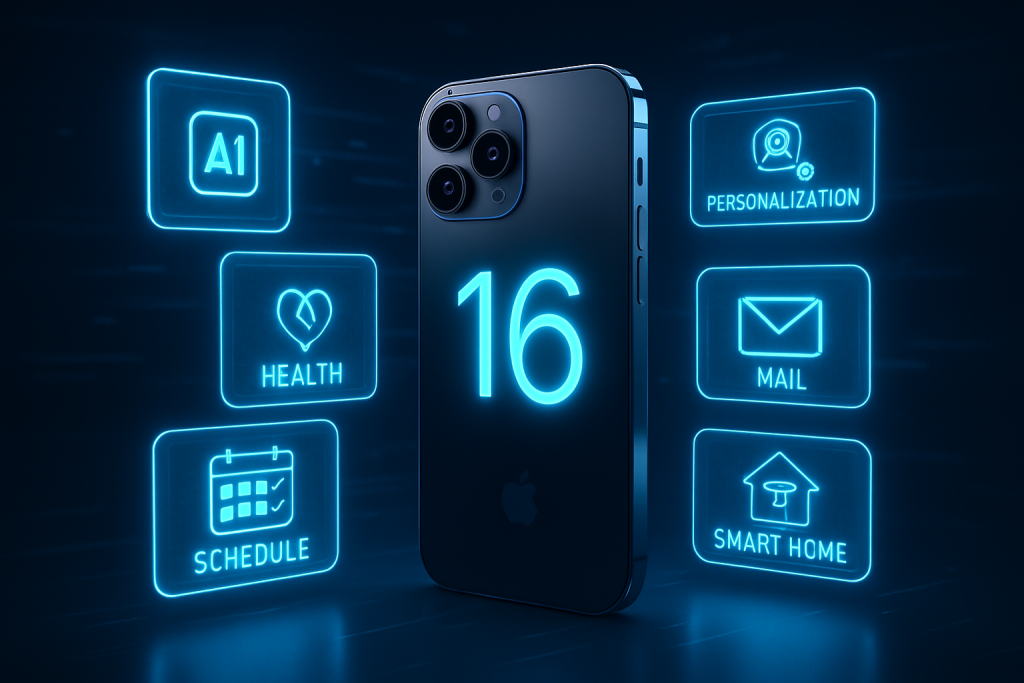The air in Cupertino crackled with anticipation. September 9th, 2025. The annual Apple pilgrimage. This wasn’t just another product launch; it was a declaration. A stake in the ground. A defiant roar from a company that, some whispered, was starting to look a little…stale. But as the lights dimmed in the Steve Jobs Theater, and Tim Cook took the stage, it became clear: Apple was betting big on AI, and they were ready to show the world their hand.
Forget incremental upgrades. This wasn’t about slightly shinier screens or marginally faster processors. This was about embedding intelligence, artificial intelligence, deep into the very DNA of every Apple device. It was about transforming the way we interact with technology, not just tweaking the interface.
The star of the show, of course, was the iPhone 16. Or, as some are already calling it, the “iPhone Air.” The whispers had been circulating for months: a sleeker, lighter design. But the real magic wasn’t in the form factor; it was in the brains. Apple promised “advanced AI capabilities” that would “enhance user experience.” What does that even *mean*? Think personalized recommendations that actually *get* you. Siri that anticipates your needs before you even articulate them. Imagine your phone knowing you’re running late for a meeting and proactively suggesting an alternative route, while simultaneously composing a text to your boss. No more frantic fumbling; just seamless, intuitive assistance. Like having a digital Alfred always at your beck and call.
But the AI love wasn’t limited to the iPhone. The new Apple Watches, both entry-level and high-end, were also getting a serious AI injection. We’re talking about personalized health and fitness insights taken to a whole new level. Forget generic step counters and calorie trackers. This is about AI analyzing your sleep patterns, your heart rate variability, your activity levels, and then crafting a bespoke wellness plan tailored specifically to *your* body and *your* lifestyle. It’s like having a personal trainer and a doctor living on your wrist.
And then there were the iPad Pros. Always the workhorses of the Apple ecosystem, these tablets were now being supercharged with AI-driven functionalities designed to boost productivity. Imagine AI that can automatically organize your files, prioritize your tasks, and even suggest creative solutions to complex problems. Think of it as a digital assistant that actually *assists*, freeing you up to focus on the truly important stuff. The stuff that humans are still (for now) better at than machines.
But the real showstopper? The accelerated version of the Vision Pro headset. Apple’s foray into augmented reality was already turning heads, but with enhanced AI, the Vision Pro is poised to deliver an even more immersive and mind-blowing experience. Imagine layering digital information seamlessly onto the real world, with AI anticipating your needs and providing contextually relevant insights. It’s like living in a sci-fi movie, except it’s real. And it’s happening now.
So why this sudden, all-in push for AI? Simple: competition. In the tech world, you’re either innovating or you’re dying. And companies like Samsung, Honor, and Huawei have been making serious inroads in the AI space. Apple, always fiercely protective of its market share, needed to respond. They needed to show the world that they weren’t just a hardware company; they were an AI powerhouse.
But there’s more to this story than just competitive pressures. There’s also the looming specter of geopolitics. The ongoing trade war between the U.S. and China has forced Apple to rethink its supply chain. Hence the announcement of a massive $600 billion investment in the United States over the next four years. This isn’t just about mitigating the impact of tariffs; it’s about securing Apple’s future in an increasingly uncertain world. It’s about bringing manufacturing back home, creating jobs, and asserting American technological dominance. It’s a move that’s as much political as it is economic.
The implications of Apple’s AI push are far-reaching. For consumers, it means more personalized, intuitive, and powerful devices. For developers, it means new opportunities to create innovative AI-powered apps. For businesses, it means new ways to leverage AI to improve productivity and efficiency. But it also raises some thorny questions. How much data are we willing to share with these AI systems? How do we ensure that these systems are fair and unbiased? And what happens when AI becomes so integrated into our lives that we can’t function without it?
These are not just technical questions; they are ethical and philosophical questions that we, as a society, need to grapple with. As AI becomes more powerful, we need to be more vigilant about its potential risks. We need to ensure that AI is used to enhance human capabilities, not to replace them. We need to ensure that AI is used to promote fairness and justice, not to perpetuate bias and discrimination.
The financial markets are certainly taking notice. Investors and analysts are closely watching Apple’s AI strategy, eager to see if the company can maintain its market leadership in the face of intense competition. The success of the iPhone 16 and the Vision Pro will be particularly crucial. If Apple can deliver on its promises, the stock price could soar. But if the AI integration falls flat, the company could face a significant backlash.
Ultimately, Apple’s September 9th event was more than just a product launch. It was a statement of intent. A bold declaration that Apple is committed to AI and that it intends to be a leader in this transformative technology. Whether they succeed remains to be seen. But one thing is clear: the AI revolution is here, and Apple is determined to be at the forefront.
Discover more from Just Buzz
Subscribe to get the latest posts sent to your email.


